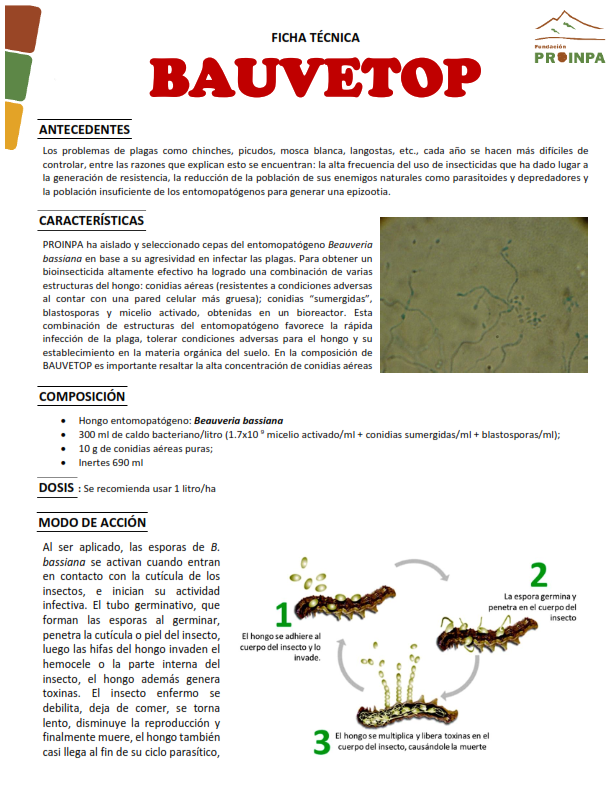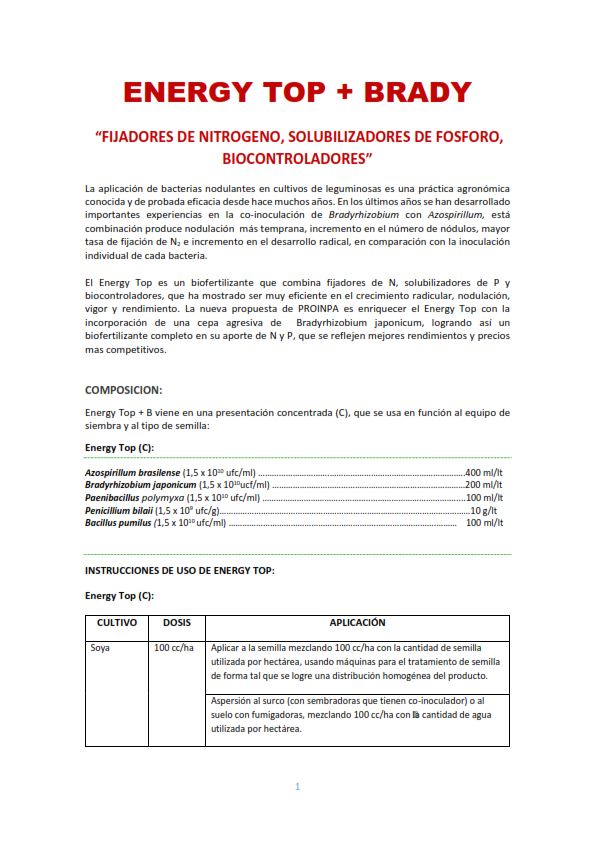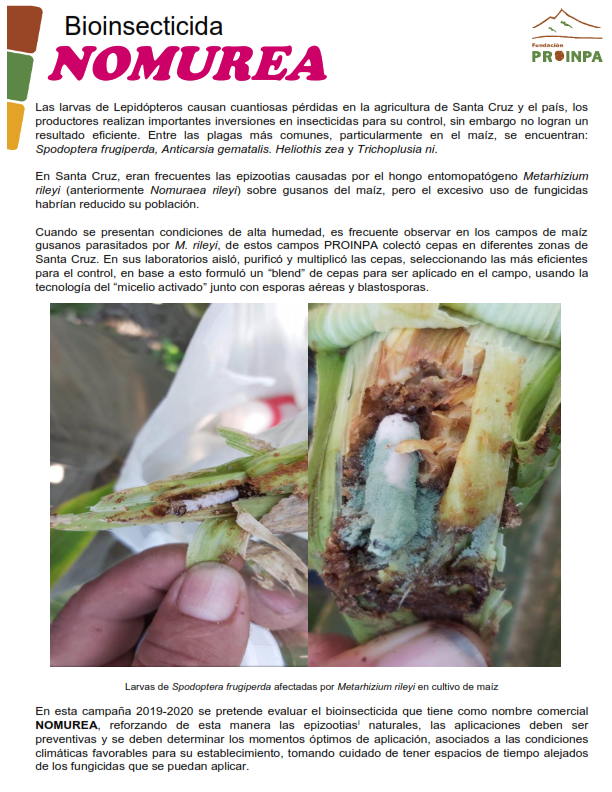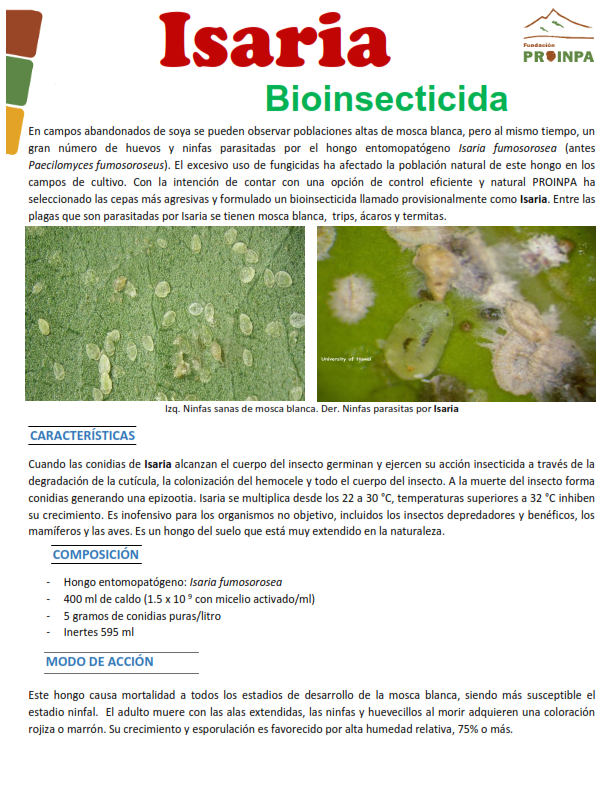Current technical notes

Pest problems such as bedbugs, weevils, whiteflies, locusts, etc., are becoming more difficult each year.
control, among the reasons that explain this are: the high frequency of the use of insecticides that has given rise to
the generation of resistance, the reduction of the population of its natural enemies such as parasitoids and predators and
the insufficient population of entomopathogens to generate an epizootic.

Energy Top is a biofertilizer that combines N fixers, P solubilizers and
biocontrollers, which has shown to be very efficient in root growth, nodulation, vigor and yield. PROINPA's new proposal is to enrich the Energy Top with the incorporation of an aggressive strain of Bradyrhizobium japonicum, thus achieving a complete biofertilizer in its contribution of N and P, which reflects better yields and more competitive prices.

Lepidoptera larvae cause large losses in agriculture in Santa Cruz and the country, producers make significant investments in insecticides for their control, however they do not achieve an efficient result. Among the most common pests, particularly in corn, are:
Spodoptera frugiperda, Anticarsia gematalis. Heliothis zea and Trichoplusia ni.

In abandoned soybean fields, high whitefly populations can be observed, but at the same time, a large number of eggs and nymphs parasitized by the entomopathogenic fungus Isaria fumosorosea (formerly Paecilomyces fumosoroseus). The excessive use of fungicides has affected the natural population of this fungus in cultivated fields. With the intention of having an efficient and natural control option, PROINPA has selected the most aggressive strains and formulated a bioinsecticide provisionally called Isaria. Among the pests that are parasitized by Isaria are whitefly, thrips, mites and termites.